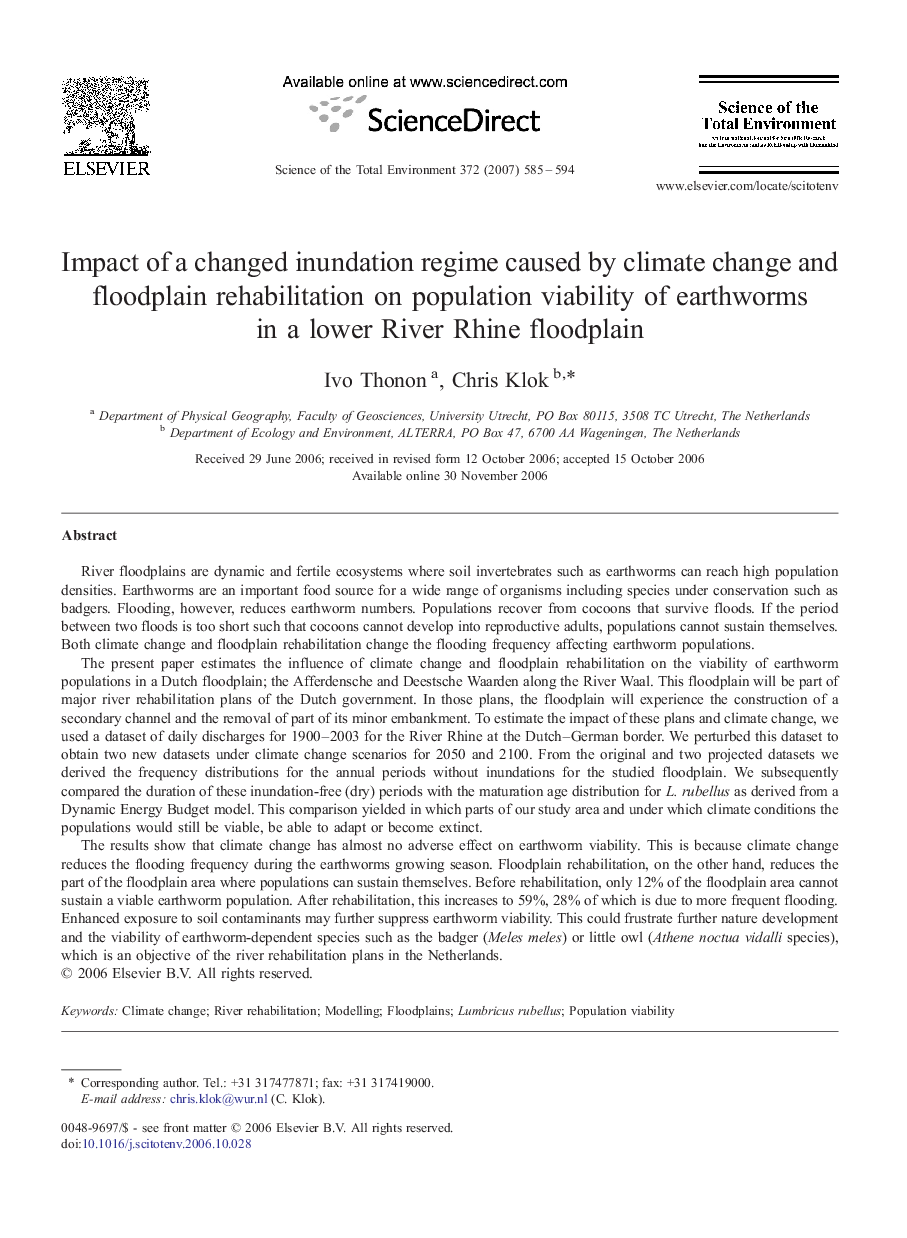| کد مقاله | کد نشریه | سال انتشار | مقاله انگلیسی | نسخه تمام متن |
|---|---|---|---|---|
| 4433573 | 1619961 | 2007 | 10 صفحه PDF | دانلود رایگان |

River floodplains are dynamic and fertile ecosystems where soil invertebrates such as earthworms can reach high population densities. Earthworms are an important food source for a wide range of organisms including species under conservation such as badgers. Flooding, however, reduces earthworm numbers. Populations recover from cocoons that survive floods. If the period between two floods is too short such that cocoons cannot develop into reproductive adults, populations cannot sustain themselves. Both climate change and floodplain rehabilitation change the flooding frequency affecting earthworm populations.The present paper estimates the influence of climate change and floodplain rehabilitation on the viability of earthworm populations in a Dutch floodplain; the Afferdensche and Deestsche Waarden along the River Waal. This floodplain will be part of major river rehabilitation plans of the Dutch government. In those plans, the floodplain will experience the construction of a secondary channel and the removal of part of its minor embankment. To estimate the impact of these plans and climate change, we used a dataset of daily discharges for 1900–2003 for the River Rhine at the Dutch–German border. We perturbed this dataset to obtain two new datasets under climate change scenarios for 2050 and 2100. From the original and two projected datasets we derived the frequency distributions for the annual periods without inundations for the studied floodplain. We subsequently compared the duration of these inundation-free (dry) periods with the maturation age distribution for L. rubellus as derived from a Dynamic Energy Budget model. This comparison yielded in which parts of our study area and under which climate conditions the populations would still be viable, be able to adapt or become extinct.The results show that climate change has almost no adverse effect on earthworm viability. This is because climate change reduces the flooding frequency during the earthworms growing season. Floodplain rehabilitation, on the other hand, reduces the part of the floodplain area where populations can sustain themselves. Before rehabilitation, only 12% of the floodplain area cannot sustain a viable earthworm population. After rehabilitation, this increases to 59%, 28% of which is due to more frequent flooding. Enhanced exposure to soil contaminants may further suppress earthworm viability. This could frustrate further nature development and the viability of earthworm-dependent species such as the badger (Meles meles) or little owl (Athene noctua vidalli species), which is an objective of the river rehabilitation plans in the Netherlands.
Journal: Science of The Total Environment - Volume 372, Issues 2–3, 1 January 2007, Pages 585–594